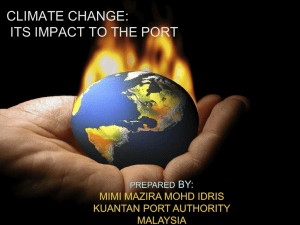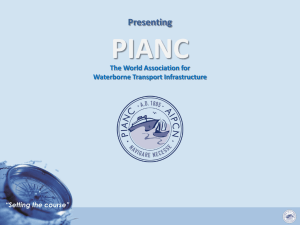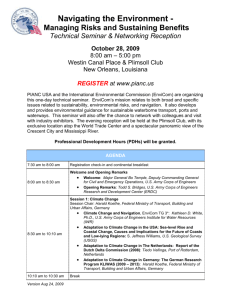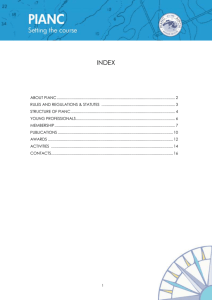Keeping safe on and off board
advertisement
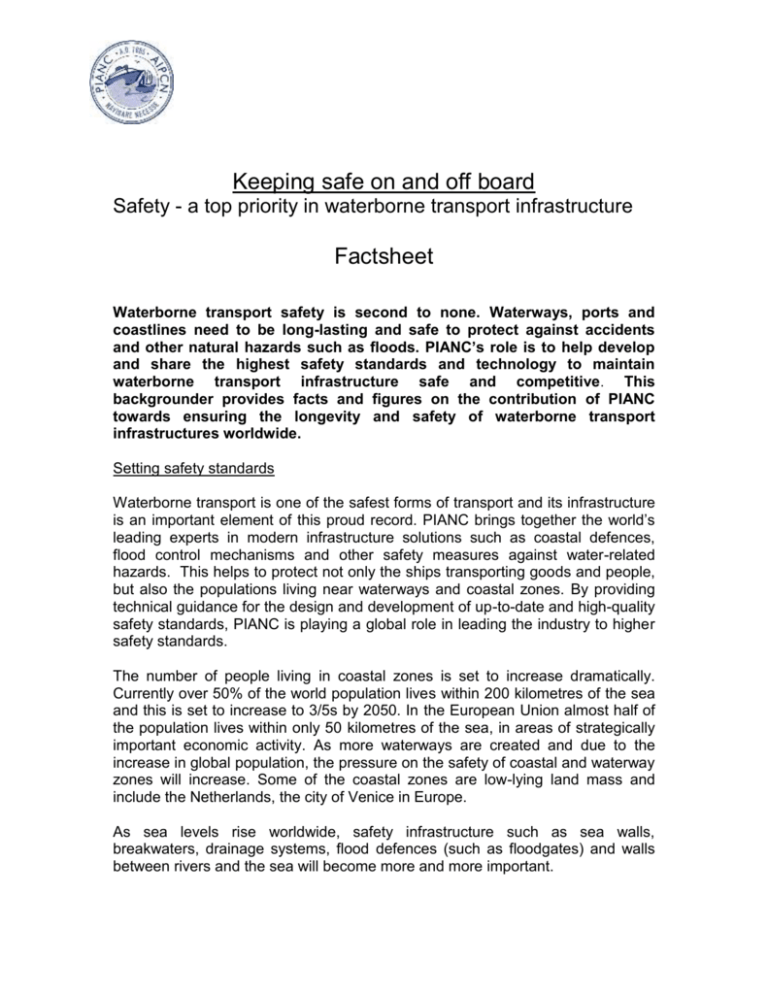
Keeping safe on and off board Safety - a top priority in waterborne transport infrastructure Factsheet Waterborne transport safety is second to none. Waterways, ports and coastlines need to be long-lasting and safe to protect against accidents and other natural hazards such as floods. PIANC’s role is to help develop and share the highest safety standards and technology to maintain waterborne transport infrastructure safe and competitive. This backgrounder provides facts and figures on the contribution of PIANC towards ensuring the longevity and safety of waterborne transport infrastructures worldwide. Setting safety standards Waterborne transport is one of the safest forms of transport and its infrastructure is an important element of this proud record. PIANC brings together the world’s leading experts in modern infrastructure solutions such as coastal defences, flood control mechanisms and other safety measures against water-related hazards. This helps to protect not only the ships transporting goods and people, but also the populations living near waterways and coastal zones. By providing technical guidance for the design and development of up-to-date and high-quality safety standards, PIANC is playing a global role in leading the industry to higher safety standards. The number of people living in coastal zones is set to increase dramatically. Currently over 50% of the world population lives within 200 kilometres of the sea and this is set to increase to 3/5s by 2050. In the European Union almost half of the population lives within only 50 kilometres of the sea, in areas of strategically important economic activity. As more waterways are created and due to the increase in global population, the pressure on the safety of coastal and waterway zones will increase. Some of the coastal zones are low-lying land mass and include the Netherlands, the city of Venice in Europe. As sea levels rise worldwide, safety infrastructure such as sea walls, breakwaters, drainage systems, flood defences (such as floodgates) and walls between rivers and the sea will become more and more important. Waterborne transport infrastructure needs to be continuously improved and adapted to ensure the safety of coastal population, to protect infrastructures and landscapes – and to ensure the continuance of global trade. Without the infrastructure to load and unload ships and the watermanagement techniques, waterborne transport would not be able to continue. Contributing to safety PIANC and its members seek solutions to all aspects of infrastructural protection including flood control and coast-line protection, river improvements, supervision and control of canal embankments and bank protection. They also focus on other strategic safety projects including the building and maintenance of ports and harbours and ensuring that the latest meteorological technologies are being used by the maximum number of people. For instance, the implementation of monitoring stations and hydro-meteorological is essential to forecast effects of sea level rise as well as storm warnings for both the navigation industry and the general population. PIANC’s contribution to the safety of waterborne transport – some examples: - Helping shape a EU legislative framework for waterborne transport safety: PIANC played an important role increasing safety, reliability and efficiency of inland waterway transport through its assistance on developing the EU Directive that implemented the River Information Services – allowing for real-time traffic monitoring and management. - Technical guidance on safe infrastructure: When it comes to ship safety the infrastructures play an important role as they facilitate safe berthing and off-loading as well as providing opportunities for authorities to ensure ship safety standards are being adhered to. For instance, PIANC provides technical guidance on issues such as ship collisions due to the presence of bridges; guidelines on types of fenders and mooring devises; corrosion of steel in maritime structures and many others. - Learning from hazards to help increase safety in the future: Immediately after the 2004 Tsunami, PIANC set up a working group on future protection against disasters. The working group has since studied and made recommendations on the design criteria for maritime structures to ensure preparations are made in advance as well as countermeasures against tsunamis in ports ABOUT PIANC - PIANC is the forum where professionals from all over the world join forces to promote waterborne transport and provide expert advice on costeffective and sustainable infrastructures. Established in 1885, PIANC continues to be the leading partner for governments and the private sector in the design, development and maintenance of ports, waterways and coastal areas. Members include national governments and public authorities, corporations and interested individuals from more than 80 countries. For further information: www.pianc.org Sources: PIANC reports, European Commission DG Research, European Commission, DG Energy and Transport, EUractiv, European Maritime Safety Agency

